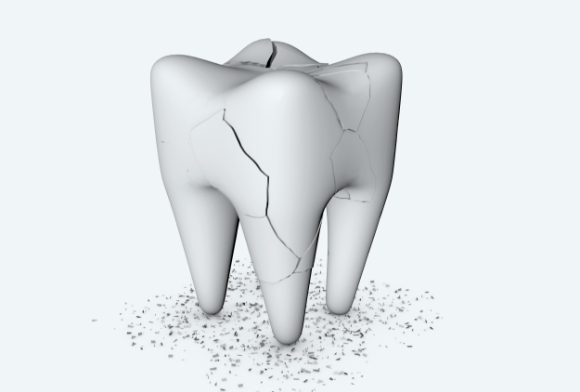Cracked Tooth Syndrome – Carrollton, TX
What to Do About Cracks in Your Smile
Our teeth are remarkably strong. They are firmly anchored to our jawbone and are protected by a tough coating of the outer enamel. Yet, they are still prone to cracking, chipping and breakage. Cavities, large fillings, biting on hard objects, and trauma are some of the reasons that teeth become cracked. At Celebration Family Dental of Carrollton, we offer a number of solutions for cracked tooth syndrome in Carrollton, TX that can repair and restore cracked teeth.
Why Choose Celebration Family Dental of Carrollton for Cracked Tooth Syndrome?
- Same-Day Emergency Care
- Durable Metal-Free Crowns
- Comfortable, State-of-the-Art Dental Office
Types Of Tooth Cracks

- Craze Lines: Craze lines are tiny fissures in the tooth enamel. These are normally harmless and do not need treatment. But, if you experience tooth pain, they will need to be evaluated and treated. The smallest of craze lines on the surface of a tooth normally don’t show up on an X-ray, but they can be detected by using an explorer.
- Vertical Cracks: Vertical cracks begin at the chewing surface of a tooth and go towards the roots. They also may start at the root and make their way up to the crown. In either case, they do not cause the tooth to completely split. These cracks can cause minor discomfort, pain while biting, and sensitivity to hot and cold foods and temperatures. These will need prompt attention from your dentist because their progression can easily damage the tooth beyond repair.
- Deep Fractures or Split Teeth: Deep fractures may cause a tooth to split into two parts, leading to inflammation and pain in the pulp of the tooth. The problem will need immediate attention from your dentist, and it is often not possible to save a tooth with such cracks.
Treatment for Cracked Teeth

The treatment for a cracked tooth depends entirely on the extent and severity of the damage. Smaller cracks can be easily filled with restorative materials when detected in time. For larger cracks that go deep into the pulp of the tooth, root canal treatment may be required. The tooth will then be covered with a dental crown to protect it. Extraction may be needed for splits or severe fractures that are beyond repair. You can prevent cracks in your teeth caused by grinding or clenching or while playing sports by wearing a custom dental mouthguard.
I am Looking for a New Dentist I Need Help with Cavities or Broken Teeth I Need Assistance Getting Out of Pain I am Interested in Replacing Missing Teeth I Have a Major Life Event Approaching I'm Searching for a Dentist Who Loves Kids I am Worried About Gum Disease I am Anxious/Afraid of the Dentist View Our Services
